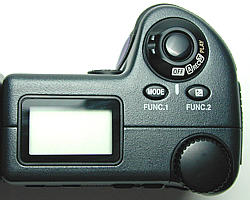
The control panel is located on the top panel of the camera. It is actually a small LCD window:

This control panel contains essentially the same information when the camera is in the A-REC mode and the M-REC mode. However, the PLAY mode only shows the battery icon. In what follows, only the most frequently used/seen items are discussed. Other items will be discussed elsewhere along with their corresponding features.
The first and perhaps the most important icon shown on the control panel is the battery icon:
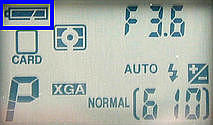
When this icon shows halfway full, the battery power is getting weaker and changing batteries will be necessary very soon. When this icon shows an empty battery and is blinking, the batteries are too weak to permit taking images. The camera will soon become inoperable, and it is the time for changing batteries.
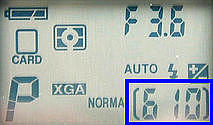
This number indicates the maximum number of images you can take if you do not change the quality (or resolution) and size of the images. This number is determined by the resolution and size of each image you take and the size of the CompactFlash memory card being used. Please refer to Selecting Image Quality and Image Size for further details.
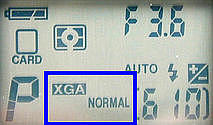
This indicator shows the image quality and size being used. Please refer to Selecting Image Quality and Image Size for further details.
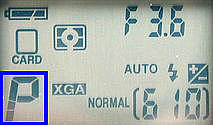
This mode indicator can be P for the Program mode, A for the Aperture Priority mode, S for the Shutter Priority mode, or M for the Manual Exposure mode. By default, when you turn on the camera under the A-REC (resp., M-REC) mode, it is in the program mode (resp., the mode you used last time). The program mode could be the mode you will be using most frequently.
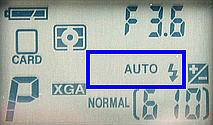
This shows the current flash mode. There are five flash settings discussed in The Built-in Flash. By default, the flash mode is AUTO, which means the internal flash will fire automatically if necessary.
It is possible to dial in an exposure compensation value for increasing or decreasing exposure. If this capability is used, the control panel will show a +/- symbol as shown below. Please refer to Exposure Compensation for further details.
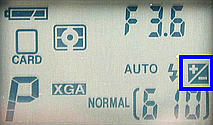
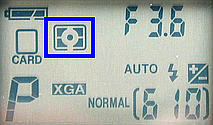
Nikon's Coolpix 990 supports three exposure metering methods: 256-element matrix, spot, center-weighted, and spot AF area. The default is the 256-element matrix method. Please refer to Exposure Metering Methods for further details.
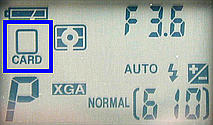
This indicator tells you the status of the memory card. Normally, it is shown just like above. When this indicator blinks, it means something wrong with the card, and an error message will be shown on the LCD monitor. For example, the camera does not detect/recognize the card, the camera has problem in accessing the card, the card is not formatted, and so on. Please refer to Formatting Your CompactFlash Card for how to format your CompactFlash card.
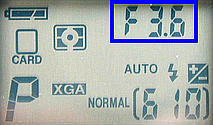
This indicator is actually a number located in the upper-right corner of the control panel. It displays the aperture or shutter speed being used, depending on the exposure mode. An aperture value is shown like F x.y, while shutter speed is shown with an integer.